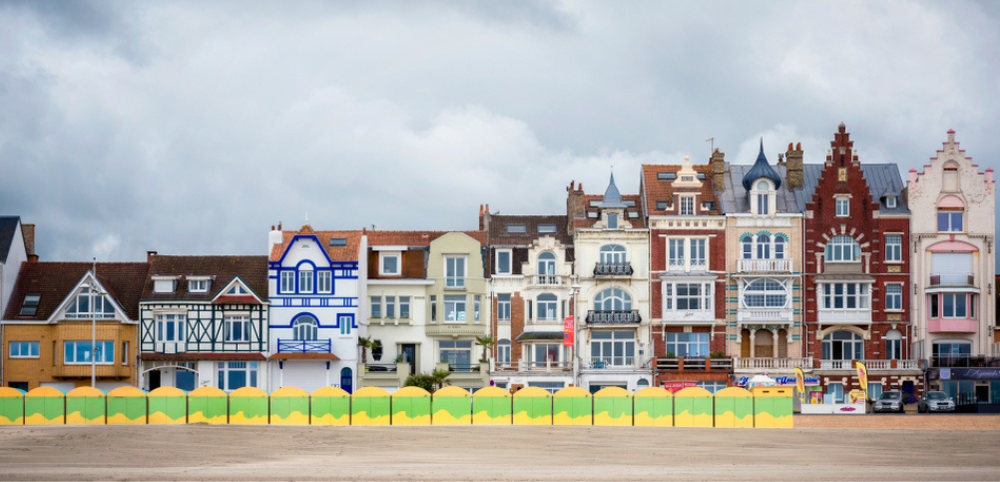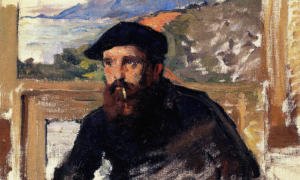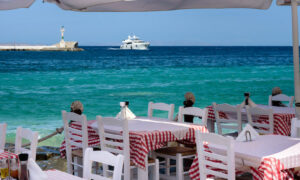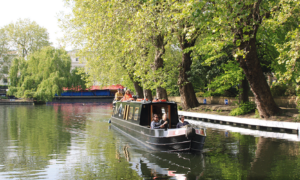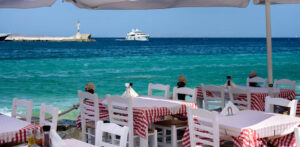(Editor’s note: This is Pt. 2 of Maryna Kryvko’s deep dive into how a home swap works, and how swapping can save you serious money on your next vacation.)
As you can read here in Pt. 1, it didn’t look like we were going to find a family with whom to swap. But on 7 August, 2023, we left home and drove away to the French seaside city of Dunkirk from our home outside Berlin.
Frankly, I was having great misgivings. What did we know about this family? On the website, they wrote that they were both teachers and had two teenage kids. They sent us a key to their house. What if the key didn’t fit? We were a day off from our own place, all prepared for a vacation. What if there was no such house in existence and it was all a sick joke? What if the house existed but was a hellhole and not at all like the description?
Finally, we drove into the street and parked across the house. We left the car and went to open the door. The house key fit; we were in! We grabbed the other key, the one for the automatic garage door, from the table in the dining room, just as the hosts said we should. We drove into the garage and parked. And then, we went to explore our new holiday home.
The house
The first thought I had about the house was — man, it’s huge and way more cool than ours.
Like ours, it was a townhouse, high and rather narrow. While ours is a new building, this one is obviously an old one, but professionally restored, rebuilt, and redesigned. It was also much wider than ours and had a bigger garden, completely private because it was separated from the neighbors by high brick walls, covered by creeping vines and ivy.
The kitchen was the highlight of the house; with a huge glass sunroof, right over the big kitchen island, containing a modern cooking range and an even more modern kitchen hood hidden into the island and sliding up on button press.
The floors in the kitchen were tiled, cool, and nice to the feet. The other half of the kitchen, to the right, was larger than our whole kitchen corner at home.
The house had four full-sized bedrooms, a serviceable home office/movie theater in the built-up loft under the roof, and a passageway room which probably served as the second home office, adjacent to the master bedroom.
There were two bathrooms with full-size baths, both also equipped with shower cabins. It was obvious that a designer worked on them because while minimalistic, they were far from standard-looking.
One thing that was weird for us us that the toilets were separate. I got used to bathrooms that had a toilet inside, too, so that was a bit uncomfortable, but not much. Perhaps because the pipes in the old house were difficult to restructure, or rather it was a cultural issue because as I read later, having separate toilets is common in France.
The kitchen went into the dining room, and the dining room went into the living room. There were no doors anywhere and the walls were mostly removed, so the whole floor seemed huge and impressive. The wooden floors in the living/dining room seemed old and restored. We later found out that they creaked mercilessly, but that probably was the price of keeping some parts of the house vintage.
The surroundings
We went out to the sea and found it to be just two blocks from the house, a five-minute walk, exactly as described on the website. The promenade was huge, very long, and adorned by old houses with intricately decorated facades. The beach was a wide strip of the finest white sand. The house was a little off the central part of the beach, so like we discovered later, it was almost never crowded.
Dunkirk is in the north of France, so it was cloudy when we arrived and the sea wasn’t exactly warm, but on the next day, the sun went out and things started looking optimistic. First days we only splashed in the shallows, but in a few days, it was warm enough to really swim and bathe. One should have watched the tides, though, because when the water was low, the walk to the water became really long! Luckily, the beach was a huge sandy shoal, so even with the water at its lowest point (I used the app called TideTimes to determine the tides), the bottom was still clean, with no algae or dirt in sight, and easily walkable. The sea just shifted farther off.
Checking out
After two weeks in the house of our French hosts, it was time to check out.
On the day before we were to drive off, we started a big cleaning. We vacuumed everything, wiped the surfaces, washed the extra towels, and cleaned the bathrooms. We aimed to leave the house in exactly the same pristine state we found it in so that our hosts would not leave a bad review afterward. It took us the best part of the day and that day certainly wasn’t like a vacation!
Some hosts require you to pay a cleaning fee, and then you don’t need to clean, because a professional service will do it after you leave. The fee might be pretty significant, for example, 150–200 euros for a larger house (4–5 bedrooms). This is always specified in the house description, however, so one knows it in advance. Among the houses on my shortlist, none of the hosts offered this service.
It’s an additional expense, of course, but for some people, it might be preferable to losing a day doing the cleanup. Then again, with a smaller place it wouldn’t be such a significant amount of work.
The next morning, we said goodbye to the cool home swap house. We drove out of the garage, went inside once more, and left all the keys on the dining room table, as instructed. The hosts had their own keys, and they were to return later that day. We had a long drive to Berlin in front of us.
Advantages and drawbacks
So, how does a home swap compare to hotels or to renting an apartment on Airbnb?
Well, there are some obvious things to keep in mind:
- (+) You are not paying any money, apart from (and not often) a cleaning fee;
- (+) Your travel is more sustainable since you’re not wasting all the resources that the hotel usually does (think how often they change the towels and sheets, all the one-time cosmetic products with plastic packaging, and all the wasted buffet food);
- (+) You can stay in a sizeable place like your own and not in a cramped hotel room;
- (+) The host might provide the bikes or child toys, which will make your packing lighter;
- (+/-) Long-term stay is more convenient because you have all the amenities and can cook yourself or wash your stuff. It might also be a drawback, of course, because it’s more work than just having your needs covered by someone else;
- (-) You have to do the cleanup afterward;
- (-) You might need to take care of someone else’s plants or pets;
- (-) You are trusting the strangers into your own place, and of course, there is no guarantee that they wouldn’t be freaks or crazy people hell-bent on just destroying everything they see. There’s no 100-percent guarantee with a home swap, even though the website rules try to put safeguards in place to prevent this from happening.
What not to expect
Now, you might be sitting there and thinking “Oh my, I could afford that skiing trip to the Alps for just the price of the tickets.” Unfortunately, it doesn’t quite work out that way.
If you were to look for a home swap in the tourist sites, they probably will only be available during the low season or will be quite far from the desired locations (ski lifts, famous sights), or otherwise inconvenient. Because, well, if people have a place in the Alps, in a perfect location close to the ski lifts, why would they not use it themselves or monetize it during the high season? (Yeah, that’s what they thought, too.)
However, such exchanges might let you discover places that aren’t on the map, but no less worthy. They might allow you to meet new people, walk the untraveled roads, and in general, explore something that is out of the common way.
And, let’s own it, they will help you save money.
That’s why we’ll be doing it again if we have a chance.

Maryna Kryvko
Maryna Kryvko is a software developer in Germany. Maryna also writes a programming blog to share her knowledge. She sometimes speaks at conferences, though being an introvert, writing comes more naturally. Maryna says she’s not a professional writer but writing is something she likes, “and I think I can do it pretty well.”


